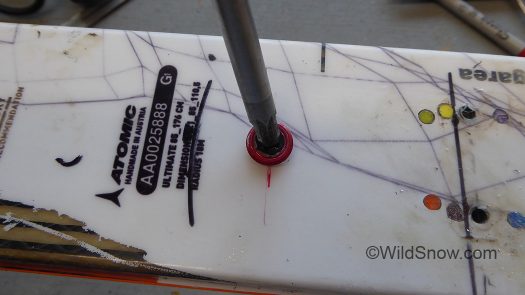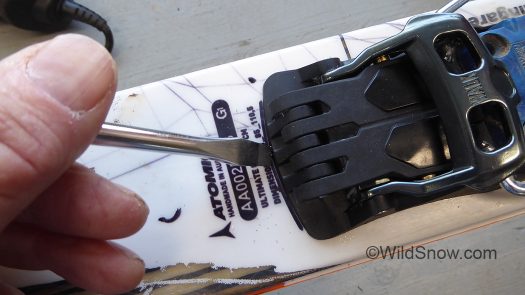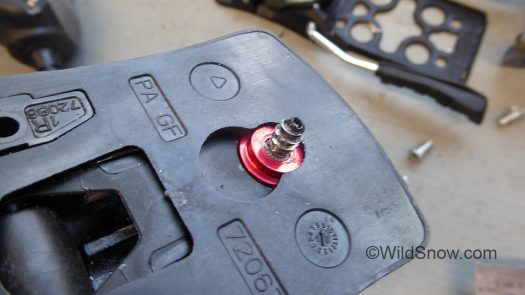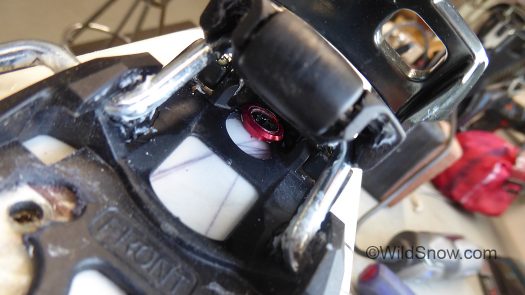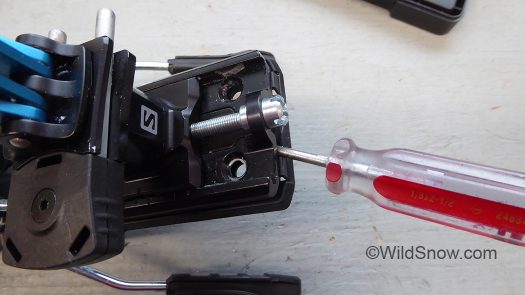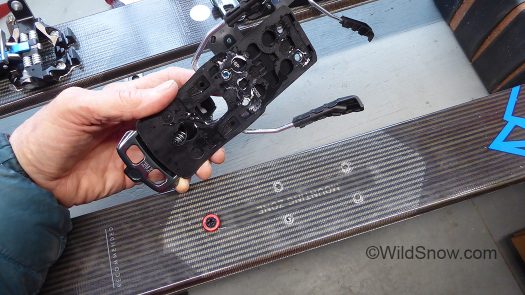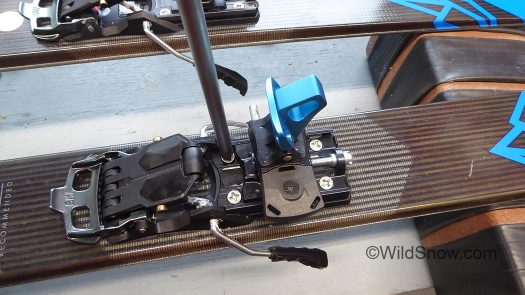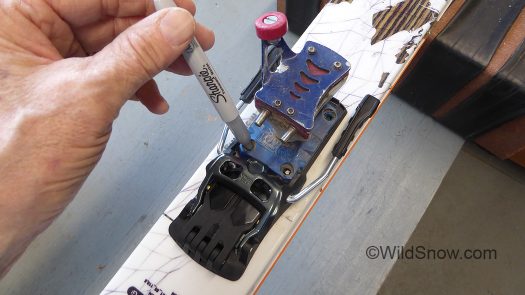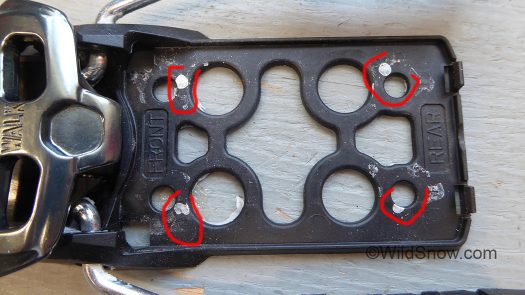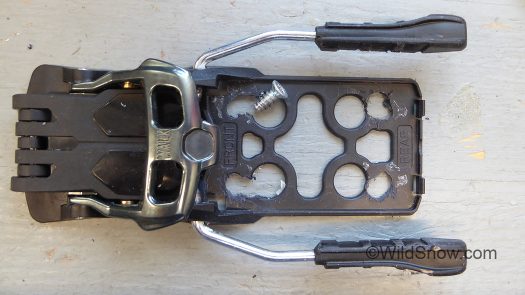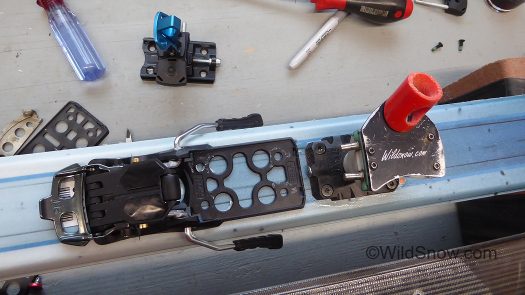An effective ski brake you can fit to different touring bindings has for years been a gear head’s dream. A few exist to one degree or another; years ago we tried making one out of a G3 Onyx binding.
Update: The intact non modified Salomon-Atomic brakes we have I’d call 95 mm in terms of max width, they add 96 grams to the weight of the binding (including the additional stud and screw). The 85 mm brakes weigh a few grams less.
Salomon splashes this year with their Mountain model binding brake (is also the Atomic Backland and one of the better minimalist tech binding available, in our opinion). Straight away, we noticed the Mountain/Backland brake operates independently of the heel unit. You flip a lever to lock the brake arms up, flip it forward to release for the downhill. We also noticed this brake is robust (ATK for example sells a “Universal Ski-Brake” that’ll work with any binding but is too minimalist in our opinion, as well as requiring the use of a leash). Time for the mod shop.
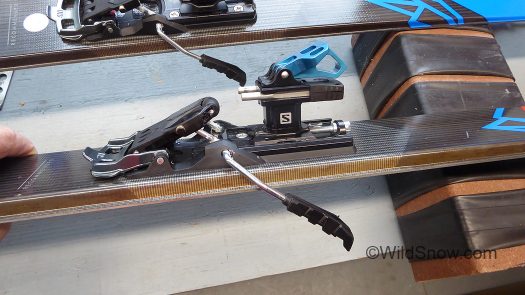
Salomon (Atomic) Mountain Brake, new this year, is the best we’ve seen. We have zero appreciation of brakes that require rotating the heel unit and playing around with systems of catches that hold it, why not simply divorce the brake from the binding? What is so hard to mentate about that? So, some Einstein at Salomon finally got it. Their Mountain binding brake is operated by simply flipping a catch that locks the arms up. Yeah, you pretty much have to take your ski off to operate. So what. It works. All the time. And…perhaps it’s easy to fit for other bindings? Read on.
This is a fun mod that’s more than proof-of-concept. I’d recommend it for any do-it-yourselfer once these brakes become widely available. A few dims and links before we blast you with images:
Distance from Salomon MTN & Atomic Backland binding rear unit, front screws, to hidden brake screw is 57 mm.
Distance from front of brake base plate to hidden screw is 22 mm.
Salomon MTN & Atomic Backland binding mount template, with a few brake dimension, link here.
Salomon-Atomic Mountain-Backland brake will be available in widths 80, 90, 100, 110 and 120 mm. Nice.
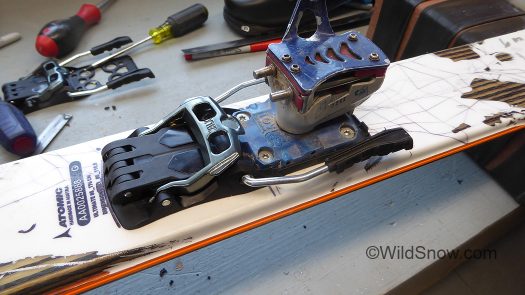
First attempt, simply mount TLT binding heel on the Salomon brake base plate. Ended up with heel pins too elevated, boot did not position down far enough to totally retract the brake.
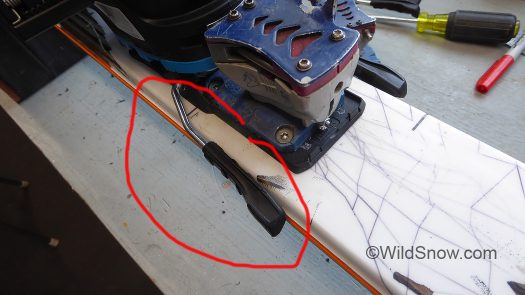
First attempt, took only minutes but boot is too high and doesn’t press down far enough on the brake retractor pad.
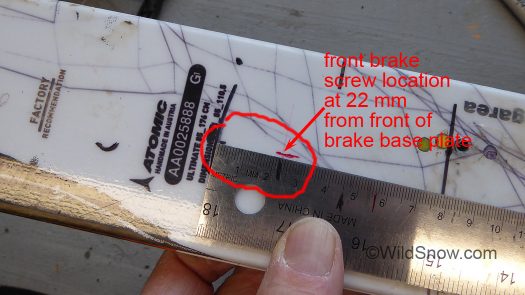
Hidden screw location is done by installing brake and binding on the ski, marking front of base plate, removing everything, then measuring back 22 mm from the front of the brake base plate.
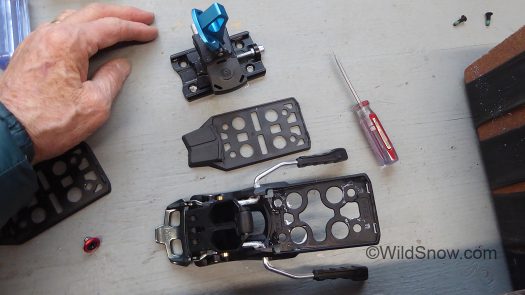
Brake with base plate at bottom of photo. Middle item is the non-brake base plate for Salomon and Atomic.
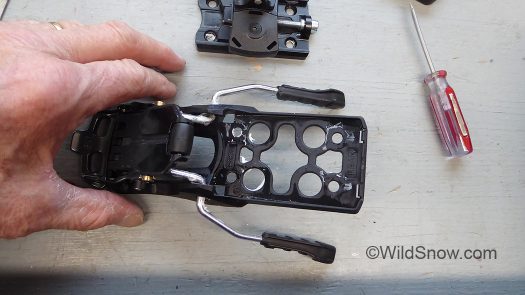
Binding will sit on this rear portion of the base plate, creating routes for screws is the next step.

Again, First attempt, simply mount TLT binding heel on the Salomon brake base plate. Ended up with heel pins too elevated, boot did not position down far enough to totally retract the brake.
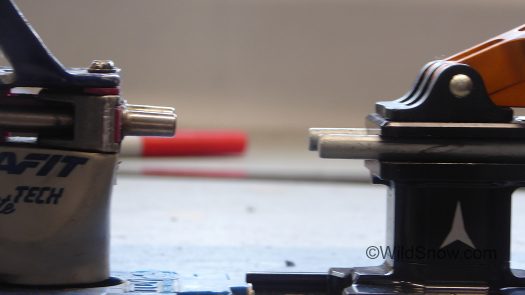
Height of my test binding (left) is quite a bit elevated in comparison to Salomon Atomic (right). Result is boot heel not pressing far enough down to effect complete operation of the brake retractor. Other binding models with less height will work in this configuration, but bindings such as Dynafit TLT and Speed Radical are too high. Yet a solution exists, read on.
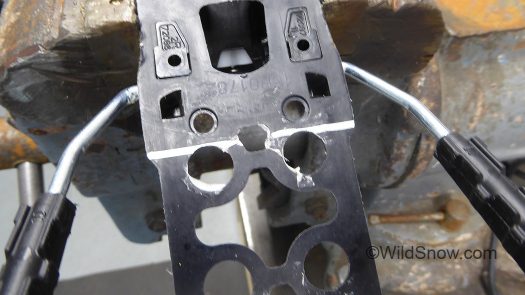
Solution for heel height problems. Cut rear portion off brake base, so it’s totally independent of binding heel unit. Doing this drops the heel unit about a millimeter and worked ok with my test boots. If necessary, a shim could be installed under the brake base to raise it to correct height.
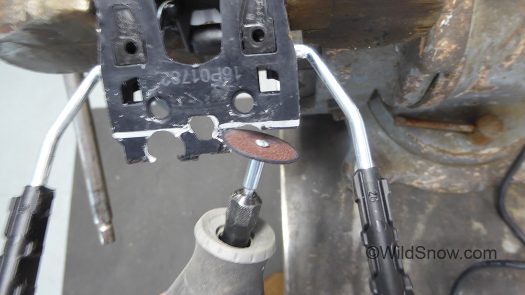
Cutting rear portion of brake base plate so binding heel can be mounted lower, and-or brake stacked on shim.
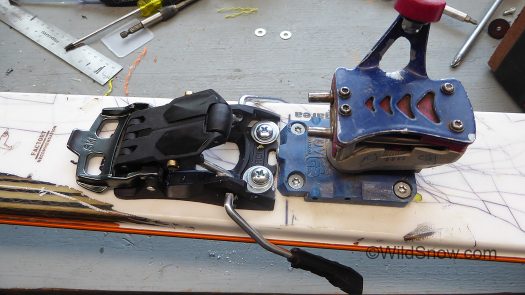
Semi final mod version. I was impressed with how easy this was. Brake retracts enough to ski as-is, but a 1 or 2 mm shim under the brake would make it work better. Likewise, the brake retractor lever jacks your heel up a bit if you’re try for heel-flat-on-ski touring mode. Solution for that is shimming up the toe unit to achieve your desired angles.
Overall, a fun day of modding. Real-world useful, also proof-of-concept to encourage Salomon-Atomic to design and manufacture a brake version that’s sold for installation on other binding systems.
WildSnow.com publisher emeritus and founder Lou (Louis Dawson) has a 50+ years career in climbing, backcountry skiing and ski mountaineering. He was the first person in history to ski down all 54 Colorado 14,000-foot peaks, has authored numerous books about about backcountry skiing, and has skied from the summit of Denali in Alaska, North America’s highest mountain.

